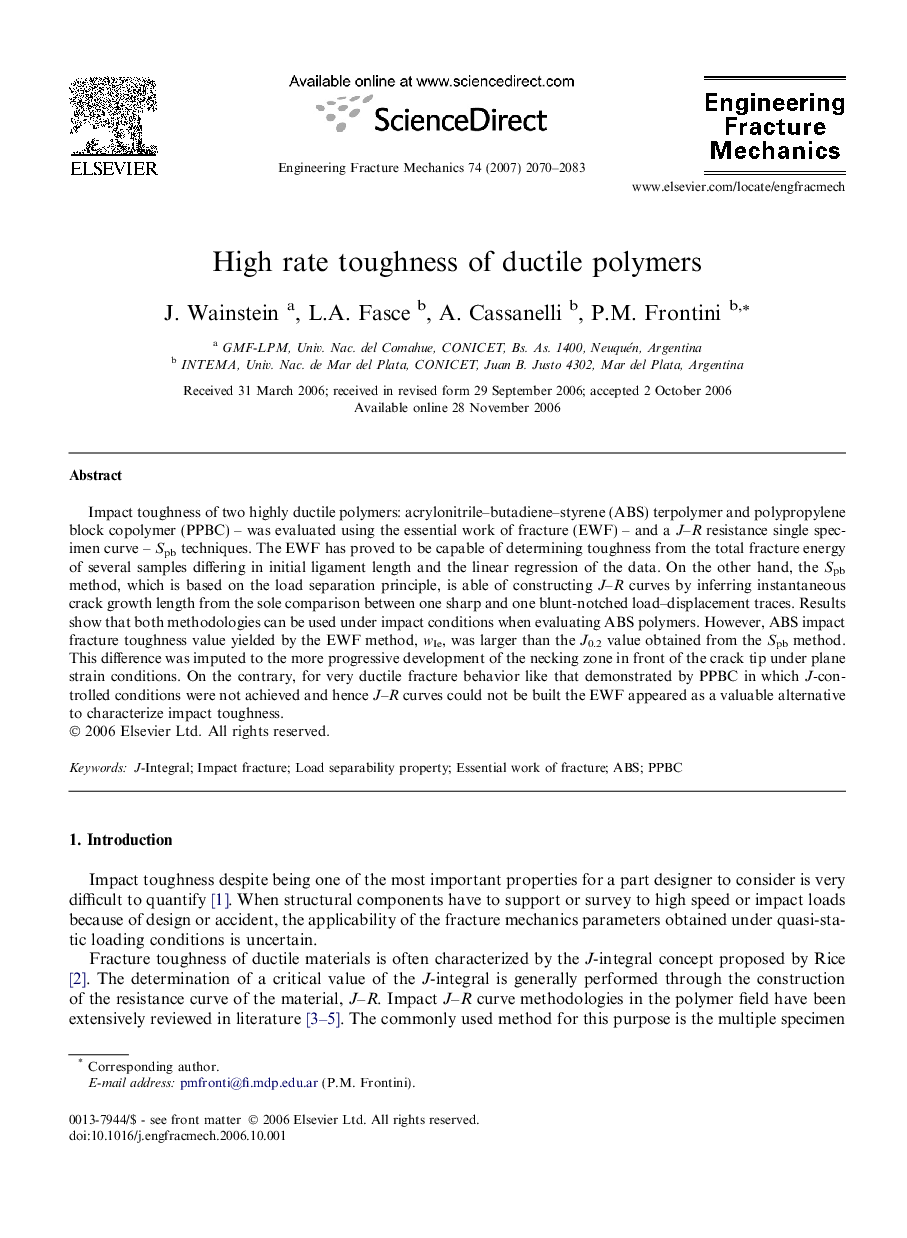| Article ID | Journal | Published Year | Pages | File Type |
|---|---|---|---|---|
| 771465 | Engineering Fracture Mechanics | 2007 | 14 Pages |
Impact toughness of two highly ductile polymers: acrylonitrile–butadiene–styrene (ABS) terpolymer and polypropylene block copolymer (PPBC) – was evaluated using the essential work of fracture (EWF) – and a J–R resistance single specimen curve – Spb techniques. The EWF has proved to be capable of determining toughness from the total fracture energy of several samples differing in initial ligament length and the linear regression of the data. On the other hand, the Spb method, which is based on the load separation principle, is able of constructing J–R curves by inferring instantaneous crack growth length from the sole comparison between one sharp and one blunt-notched load–displacement traces. Results show that both methodologies can be used under impact conditions when evaluating ABS polymers. However, ABS impact fracture toughness value yielded by the EWF method, wIe, was larger than the J0.2 value obtained from the Spb method. This difference was imputed to the more progressive development of the necking zone in front of the crack tip under plane strain conditions. On the contrary, for very ductile fracture behavior like that demonstrated by PPBC in which J-controlled conditions were not achieved and hence J–R curves could not be built the EWF appeared as a valuable alternative to characterize impact toughness.
